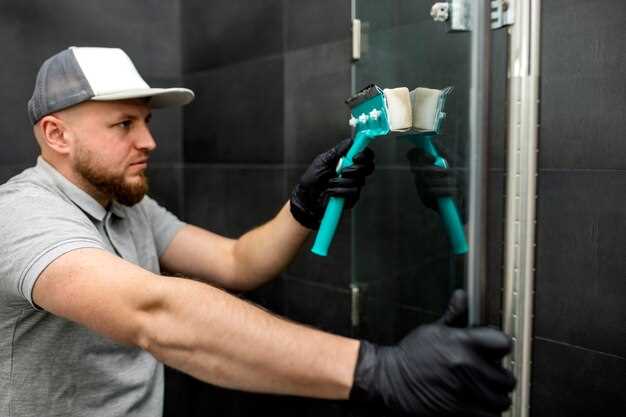
Dents in metal panels can occur for a variety of reasons, from minor accidents to improper handling during installation. These blemishes not only affect the appearance of the object but can also compromise its structural integrity. Understanding the feasibility of repairing such damage is crucial for maintaining both aesthetic qualities and functional performance.
This article explores the techniques available for removing dents from metal panels, analyzing their effectiveness and limitations. Various methods ranging from DIY approaches to professional services will be discussed, offering insight into the processes involved and the conditions under which they work best.
Determining the best course of action largely depends on the type of metal, the size and depth of the dent, and the resources available. While some dents can be pulled out effectively with simple tools or household items, others may require specialized equipment or professional intervention. This article aims to provide a comprehensive overview of the options available, empowering readers to make informed decisions when faced with dented metal surfaces.
Understanding the Tools Required for Dent Removal

Dent removal from metal panels involves a variety of specialized tools designed to restore the surface to its original condition. Each tool serves a specific purpose and is essential for achieving desirable results.
Pulling Tools: These are crucial for larger dents where the metal has been deformed significantly. Tools like slide hammers or dent pullers create a pulling force that repositions the metal from behind. They often come with multiple attachments to suit different dent shapes and sizes.
Heating Tools: Heat can soften the metal, making it more malleable and easier to work with. Heat guns or the use of boiling water can effectively expand the metal. HVAC duct tape can also be used in conjunction with heat to pull the dent out as the metal cools and contracts.
Soft Mallets: A rubber or plastic mallet is helpful for gently tapping out smaller dents or high spots. This method allows for a more controlled approach compared to harsher tools, minimizing the risk of further damage to the panel.
Body Filler: In cases where dents are too deep to pull out completely, body filler can be used to fill in imperfections. It is essential for achieving a smooth surface before painting. While not a removal tool per se, it’s an important component in the repair process.
Sandpaper and Buffing Tools: After the dent is removed and any necessary filler has set, sanding and buffing are necessary for a flawless finish. Different grits of sandpaper are used to smooth out any uneven surfaces, followed by polishing tools to restore the sheen of the metal.
PDR Kits: Paintless Dent Repair (PDR) kits are popular among professionals and DIY enthusiasts. These kits typically include a variety of tools specifically designed for dent removal without damaging paint, including specialized tabs and rods, making them highly effective for shallow dents.
Understanding these tools and their functions is critical for anyone looking to attempt dent removal on metal panels. Proper use of these tools not only improves repair outcomes but also aids in maintaining the integrity of the panel’s surface.
Step-by-Step Techniques for Metal Panel Dent Repair
Repairing a dent in a metal panel requires patience and the right techniques. Here, we outline effective steps to ensure a successful repair.
Step 1: Assess the Damage
Before beginning the repair, examine the dent carefully. Determine the depth, size, and location of the dent. This will help you decide on the most suitable repair method.
Step 2: Gather the Necessary Tools
Gather tools such as a hairdryer or heat gun, dry ice or plunger, a metal dent repair kit (if available), and safety gear like gloves and goggles. Having everything prepared will streamline the process.
Step 3: Clean the Area
Thoroughly clean the dented area with soap and water. Ensure there is no dirt, grease, or wax, as this can impede the repair process. Dry the area completely before proceeding.
Step 4: Apply Heat
If the dent is shallow, use a hairdryer or heat gun to warm the area. The heat causes the metal to expand, making it easier to work with. Be cautious not to overheat the metal to prevent damage.
Step 5: Use a Plunger
For small and shallow dents, a plunger can be effective. Ensure the plunger is clean and wet it slightly. Push it firmly against the dent and pull; repeat this process until the dent pops out.
Step 6: Dry Ice Method
For some dents, applying dry ice can help. Once the area is heated, quickly press a piece of dry ice against the dent. The drastic temperature change can make the metal contract and might pop the dent out.
Step 7: Use a Metal Dent Repair Kit
If available, a metal dent repair kit can be used. Follow the manufacturer’s instructions carefully, typically involving adhesive tabs and pulling mechanisms to gradually pull the dent out.
Step 8: Smooth the Surface
Once the dent is removed, check for any irregularities. Use sandpaper or a file to smooth out any rough edges. If necessary, you can apply primer or touch-up paint to restore the surface finish.
Step 9: Final Inspection
Inspect the repaired area under different lighting conditions to ensure the dent is completely removed and the surface is even. If satisfied, clean the area once more to remove any dust or fingerprints.
By following these steps, you can effectively repair a dent in a metal panel, restoring its original appearance without the need for professional assistance.
When to Seek Professional Help for Dent Removal

Determining when to seek professional help for dent removal is crucial for ensuring that the metal panel is restored effectively without causing further damage. Here are some key situations to consider:
1. Size and Depth of the Dent: If the dent is large or deep, it may require specialized tools and techniques that professionals have. Attempting to remove a significant dent without proper knowledge can result in a more pronounced blemish or damage to the paint.
2. Location: Dents located near edges, seams, or complex contours of a panel are often more challenging to repair. Professionals have the expertise to navigate these complexities and ensure the integrity of the metal is maintained.
3. Paint Damage: If the paint is chipped or cracked in the area of the dent, it’s advisable to consult an expert. Professionals can match the paint color and finish correctly, preventing mismatched repairs that can affect the vehicle’s appearance.
4. Materials Used: Different metal types react differently to dent removal methods. If unsure about the material properties, seeking professional guidance can prevent using inappropriate techniques that might worsen the situation.
5. Time and Effort: If attempting to remove the dent takes significantly longer than expected, or if it feels too complex, it might be wiser to leave it to a professional. This can save time and reduce frustration.
6. Insurance Considerations: In some cases, dent damage may be covered by insurance. Consulting a professional can help navigate claims and ensure necessary documentation is completed accurately.
7. Warranty Concerns: If the metal panel is under warranty, attempting a DIY fix could void it. A professional can provide assurance that the repair won’t affect existing warranties.
In summary, while minor dents can often be handled at home, seeking professional help for larger, deeper, or more complex dents is advisable to achieve the best results and preserve the integrity of the metal panel.

